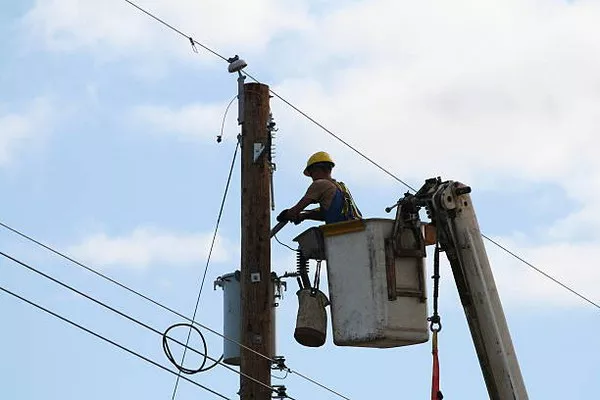Transformers are essential components in the field of electricity and power distribution, yet they often go unnoticed by the general public. These unassuming devices play a pivotal role in the efficient transmission of electricity from power stations to homes, industries, and businesses. In this article, we will delve into the world of transformers, exploring their function, types, and significance in the modern electrical grid.
The Fundamental Purpose of Transformers
Transformers are electrical devices that serve a fundamental purpose in electricity distribution: they change the voltage levels of electrical energy. Voltage, measured in volts, is the force that propels electrical current through wires. Transformers are used to increase or decrease voltage levels, depending on the requirements of the electrical grid, to facilitate the efficient and safe transmission of electrical power.
Key Functions of Transformers
1. Voltage Transformation
The primary function of a transformer is to transform voltage. It achieves this by utilizing the principles of electromagnetic induction. When an alternating current (AC) passes through the primary coil (input) of the transformer, it creates a changing magnetic field. This magnetic field, in turn, induces a voltage in the secondary coil (output) due to electromagnetic induction. The voltage change is determined by the ratio of turns between the primary and secondary coils.
2. Power Transmission
Transformers are crucial for long-distance power transmission. High-voltage transmission lines are used to transmit electricity over vast distances with minimal energy loss. Transformers increase the voltage of the electricity generated at power stations, which reduces the current. Lower current results in less power loss during transmission because power loss is directly proportional to the square of the current. When the electricity reaches its destination, another set of transformers steps down the voltage for safe distribution to homes and businesses.
Types of Transformers
Transformers come in various types, each designed for specific applications and voltage transformations. Some of the most common types include:
1. Power Transformers
Power transformers are the backbone of electrical grids. They are used to change voltage levels between transmission and distribution, ensuring efficient power transfer. These transformers can be extremely large and are typically found in substations.
2. Distribution Transformers
Distribution transformers are responsible for reducing high-voltage electricity to lower levels suitable for homes and businesses. They are often mounted on utility poles or placed on the ground in urban areas.
3. Instrument Transformers
Instrument transformers are used for measurement and protection. They include current transformers (CTs) and voltage transformers (VTs), which allow for accurate readings of current and voltage for monitoring and control purposes.
4. Auto Transformers
Auto transformers have a single winding and can be used for either voltage step-up or step-down applications. They are more compact than conventional transformers and are often used in applications where space is limited.
5. Isolation Transformers
Isolation transformers are used to provide electrical isolation between the primary and secondary windings. They are commonly employed in sensitive electronic equipment to prevent electrical noise or to ensure safety in medical devices.
The Significance of Transformers in the Electrical Grid
Transformers play a critical role in ensuring the reliability and efficiency of the electrical grid. Their significance can be summarized in the following key points:
1. Energy Efficiency
The efficient transformation of voltage reduces energy losses during transmission and distribution. High-voltage transmission lines are capable of transporting large amounts of power over long distances with minimal losses. The transformation process allows for the reduction of voltage before electricity enters homes and businesses, ensuring safety and efficient use of energy.
2. Voltage Regulation
Transformers help maintain voltage levels within specified limits. Voltage stability is essential to prevent damage to electrical equipment, enhance the quality of electrical service, and ensure safety for consumers.
3. Grid Reliability
Transformers provide a degree of redundancy in the grid. In case of a fault or outage in one part of the grid, the network can be reconfigured to maintain power supply by rerouting electricity through different paths and transformers.
4. Integration of Renewable Energy
Transformers are instrumental in integrating renewable energy sources, such as wind and solar, into the electrical grid. They help convert the variable voltage output from these sources into a stable voltage for distribution.
Challenges and Innovations in Transformer Technology
While transformers have been a cornerstone of electrical engineering for over a century, they are not without challenges. Some of these challenges include:
1. Aging Infrastructure
Many transformers in use today are reaching the end of their operational life, requiring significant investments in infrastructure upgrades. Aging transformers can be more prone to failure, leading to service disruptions.
2. Environmental Concerns
Traditional oil-filled transformers have raised environmental concerns due to the potential for oil leaks and the presence of environmentally harmful substances in the oil. Efforts are underway to develop more environmentally friendly transformer technologies.
3. Smart Grid Integration
The integration of transformers into the smart grid involves adding communication and control capabilities to improve grid monitoring and management. This allows for real-time adjustments and more efficient grid operation.
4. Reduced Energy Losses
Researchers are working on enhancing transformer efficiency and reducing energy losses even further. This includes the development of superconducting transformers and advanced materials.
Conclusion
Transformers are unsung heroes in the world of electricity, facilitating the efficient transmission of power across vast distances and ensuring voltage levels are suitable for both industrial and domestic use. These unassuming devices play a pivotal role in the stability and reliability of the electrical grid, making them a cornerstone of modern society’s energy infrastructure. As the world continues to embrace renewable energy and advances in technology, transformers will remain essential to the evolution of the electrical grid, ensuring a sustainable and reliable power supply for future generations.

